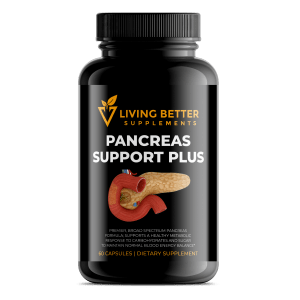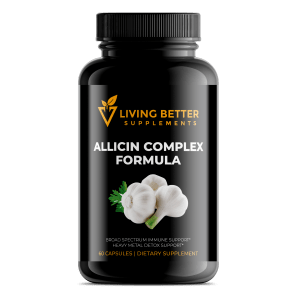| Formula Purposes & Benefits |
| NAC Plus is developed based on cutting-edge scientific research and expert formulation to support healthy detoxification, antioxidant status, respiratory health, and glutathione status in the body.
Our formula is the choice for doctors seeking to enhance their patients’ well-being. Utilize our formula for superior patient well-being. Our formula includes the NAC Excel Blend, enriched with organic curcumin, organic milk thistle, and green tea extract. With this powerful combination of phytonutrients, empower your patients with comprehensive antioxidant support. Our formula is proudly made in the USA in an FDA registered facility, following Good Manufacturing Practices (GMP) standards. Our commitment to excellence is reflected in the fact that only 4% of the supplements on the market can match our world-class standards. |
| Formula Ingredient Deck | Benefits Of Each Ingredient |
| N-Acetyl Cysteine |
|
| Organic Turmeric |
|
| Organic Milk Thistle |
|
| Green Tea Extract |
|
| Proper Use of This Supplement |
| Suggested Use: Take 1 capsule, 2 times daily or as directed by a health professional. |
| Our Formula | Vs Other Formulas on the Market. |
| 1. Our formula is GMP certified and made in an FDA registered facility. | 1. Source cheap ingredients from heavily polluted soils. |
| 2. High quality NAC, organic turmeric, green tea, and organic milk thistle in a bioavailable and efficaciously dosed formula. | 2. Uses cheap synthetic NAC, turmeric, green tea, and milk thistle that may have heavy metals due to poor product quality and fillers. |
25. Rothenberg, D. O., Zhou, C., & Zhang, L. (2018). A Review on the Weight-Loss Effects of Oxidized Tea Polyphenols. Molecules (Basel, Switzerland), 23(5), 1176. https://doi.org/10.3390/molecules23051176
26. Bogdanski, P., Suliburska, J., Szulinska, M., Stepien, M., Pupek-Musialik, D., & Jablecka, A. (2012). Green tea extract reduces blood pressure, inflammatory biomarkers, and oxidative stress and improves parameters associated with insulin resistance in obese, hypertensive patients. Nutrition research (New York, N.Y.), 32(6), 421–427. https://doi.org/10.1016/j.nutres.2012.05.007
27. Haidari, F., Samadi, M., Mohammadshahi, M., Jalali, M. T., & Engali, K. A. (2017). Energy restriction combined with green coffee bean extract affects serum adipocytokines and the body composition in obese women. Asia Pacific journal of clinical nutrition, 26(6), 1048–1054. https://doi.org/10.6133/apjcn.022017.03
117. Chilelli, N. C., Ragazzi, E., Valentini, R., Cosma, C., Ferraresso, S., Lapolla, A., & Sartore, G. (2016). Curcumin and Boswellia serrata Modulate the Glyco-Oxidative Status and Lipo-Oxidation in Master Athletes. Nutrients, 8(11), 745. https://doi.org/10.3390/nu8110745
118. Barzegar, A., & Moosavi-Movahedi, A. A. (2011). Intracellular ROS protection efficiency and free radical-scavenging activity of curcumin. PloS one, 6(10), e26012. https://doi.org/10.1371/journal.pone.0026012
119. Banik, U., Parasuraman, S., Adhikary, A. K., & Othman, N. H. (2017). Curcumin: the spicy modulator of breast carcinogenesis. Journal of experimental & clinical cancer research : CR, 36(1), 98. https://doi.org/10.1186/s13046-017-0566-5
120. Suhett, L. G., de Miranda Monteiro Santos, R., Silveira, B., Leal, A., de Brito, A., de Novaes, J. F., & Lucia, C. (2021). Effects of curcumin supplementation on sport and physical exercise: a systematic review. Critical reviews in food science and nutrition, 61(6), 946–958. https://doi.org/10.1080/10408398.2020.1749025
121. Pivari, F., Mingione, A., Brasacchio, C., & Soldati, L. (2019). Curcumin and Type 2 Diabetes Mellitus: Prevention and Treatment. Nutrients, 11(8), 1837. https://doi.org/10.3390/nu1108183
122. Ashtary-Larky, D., Rezaei Kelishadi, M., Bagheri, R., Moosavian, S. P., Wong, A., Davoodi, S. H., Khalili, P., Dutheil, F., Suzuki, K., & Asbaghi, O. (2021). The Effects of Nano-Curcumin Supplementation on Risk Factors for Cardiovascular Disease: A GRADE-Assessed Systematic Review and Meta-Analysis of Clinical Trials. Antioxidants (Basel, Switzerland), 10(7), 1015. https://doi.org/10.3390/antiox10071015
123. Mata, I., Mata, S., Menezes, R., Faccioli, L. S., Bandeira, K. K., & Bosco, S. (2020). Benefits of turmeric supplementation for skin health in chronic diseases: a systematic review. Critical reviews in food science and nutrition, 1–15. Advance online publication. https://doi.org/10.1080/10408398.2020.1798353
345. Eisvand, F., Razavi, B. M., & Hosseinzadeh, H. (2020). The effects of Ginkgo biloba on metabolic syndrome: A review. Phytotherapy research : PTR, 34(8), 1798–1811. https://doi.org/10.1002/ptr.6646
351. Millea P. J. (2009). N-acetylcysteine: multiple clinical applications. American family physician, 80(3), 265–269.
352. Rushworth, G. F., & Megson, I. L. (2014). Existing and potential therapeutic uses for N-acetylcysteine: the need for conversion to intracellular glutathione for antioxidant benefits. Pharmacology & therapeutics, 141(2), 150–159. https://doi.org/10.1016/j.pharmthera.2013.09.00





